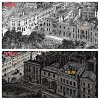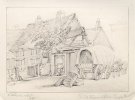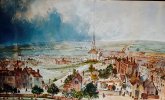viv i would say that is about right the only thing is i can only see what looks like covered wagons no sign of samuel lines house and art studio unless i am missing something..maybe he had not built his house in 1821..according to wiki his studio was in newhall st
Lines studied drawing under Joseph Barber at the latter's academy on Great Charles Street,[4] and in 1807 opened his own academy for training pupils in drawing and painting in Newhall Street. This was so successful that he was able to build his own house in Temple Row.[2]
lyn
Lines studied drawing under Joseph Barber at the latter's academy on Great Charles Street,[4] and in 1807 opened his own academy for training pupils in drawing and painting in Newhall Street. This was so successful that he was able to build his own house in Temple Row.[2]
lyn
Last edited:
















